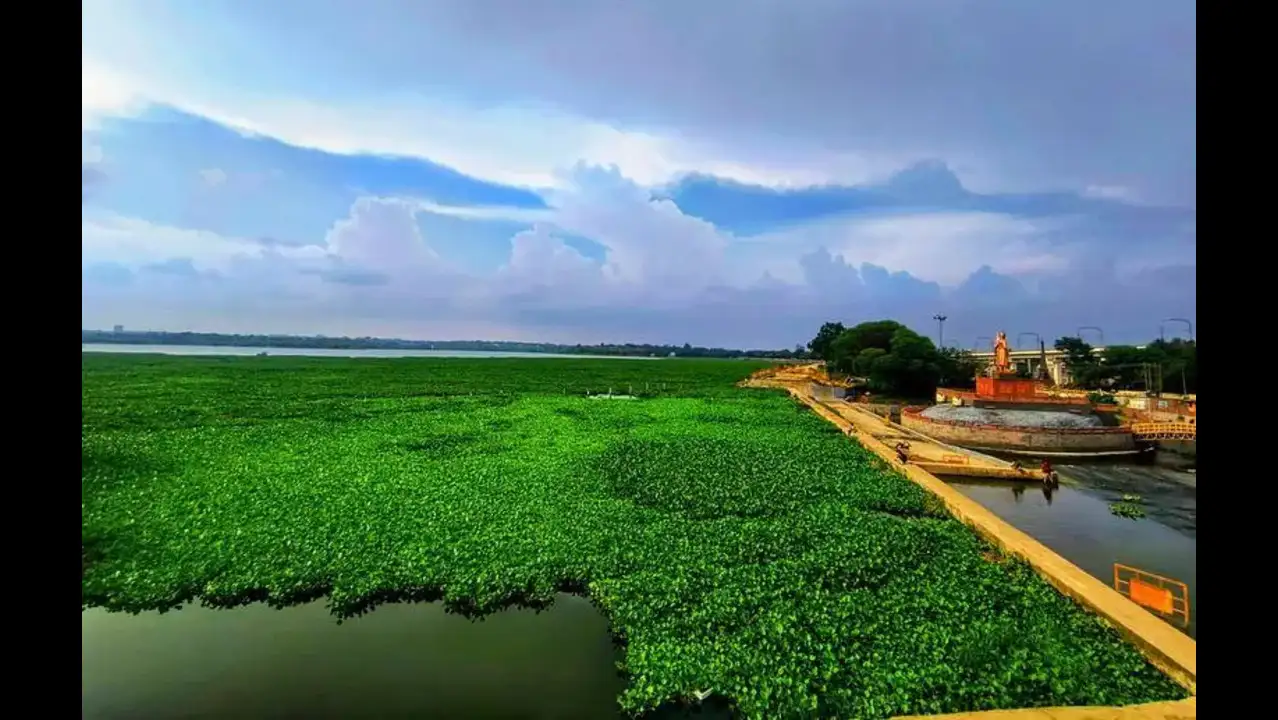Now Reading: Ambazari Lake Turns Green Again as Water Hyacinth Creeps Back, Ecosystem Under Threat
-
01
Ambazari Lake Turns Green Again as Water Hyacinth Creeps Back, Ecosystem Under Threat
Ambazari Lake Turns Green Again as Water Hyacinth Creeps Back, Ecosystem Under Threat

Nagpur’s Ambazari Lake, once a place of calm and greenery, is staring at yet another ecological setback. Water hyacinth has returned in force, blanketing large portions of the lake and choking its waters. Citizens and environmental groups warn that without consistent waste control and a long-term strategy, the lake’s recovery may slip away entirely.
Invasion of an Invasive Weed
Water hyacinth is reclaiming Ambazari Lake with alarming speed, smothering its surface and disrupting its natural balance. Despite periodic removal drives led by volunteers and NGOs, the weed keeps resurging—focused nutrient-rich sewage inflow is the culprit behind its persistence.
Cleanup Efforts Face Staggering Scale
Nagpur Municipal Corporation (NMC) has ramped up efforts, deploying heavy machinery and dedicating manpower for daily removals. But without fixing the root cause—untreated sewage spilling into the lake—these efforts feel like a band-aid on a deep wound.
A Lake with Legacy and Risk
Ambazari Lake is more than just water and weeds. As the origin point of the Nag River and a once-popular leisure spot, its health impacts everything downstream. During the 2023 floods, hyacinth overgrowth blocked drainage, worsening the flood impact across Nagpur.
Why Tier-2 Towns Should Care
For many smaller Indian cities, Ambazari’s battle resonates deeply. It’s a cautionary tale that water bodies need proactive care—neglect invites not just ecological decay but public health risks, worse flooding, and loss of recreational space. Urban lakes are lifelines; they can’t just be cleaned when problems appear.
Conclusion
Ambazari’s current state isn’t just a surface issue—it mirrors the deeper challenge of urban planning, hygiene, and civic responsibility. If the city wants this lake to breathe again, it needs a sustainable plan: secure sewage treatment, regular maintenance, and community oversight. Otherwise, this fading green jewel could slip beyond repair.






















